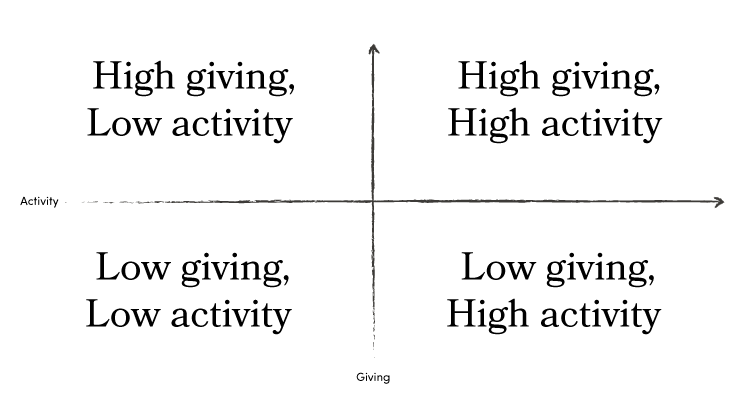Engagement Is a Stream. Are Alumni and Supporters Flowing?
"Engagement" is everywhere.
Setting aside the rest of our lives for a moment, within higher education it's a constant focus: We're trying to engage with high school prospects, to cut through the noise and build awareness of our unique brands. The college experiences of our current students will define their lives as alumni, so we're engaging them however we can. Graduates, faculty, supporters, parents, corporations — we as communicators have long lists of audiences to target, always and everywhere.
And yet, as ubiquitous as the concept has become in recent decades, if you were to ask ten members of your team to define "engagement," you'd likely get ten different answers.
So, within the advancement framework — and especially drilling down to development and alumni relations — how do we sift through all the sources of data and settle on some kind of value framework around "engagement"?
Try as I might over the years, I just haven't been able to get away from the following mental shorthand.
Creating space for every way of "giving back"
As you've likely heard, our supporters have many ways of "giving back," whether it be with their time, talent or treasure.
So, let's account for four basic groups:
Over the course of a lifetime, a supporter may consistently attend a wide range of athletics events, reunions or serve actively as a volunteer while contributing little financially. Likewise, someone may show their passion and dedication with generous levels of financial support while never attending a single event.
Those are extreme examples. I highlight them only to make the point that despite any specific goals or metrics we may have for each group, our communications and engagement planning should somehow account for each of them.
If we imagine "lifetime engagement" as a stream, with the goal of moving a person downstream gradually throughout their relationship with us, one way to think about activities and giving are as lily pads.
Some lily pads may be large (e.g., a seven-figure gift), while others may be relatively small (referring a niece or nephew to the admissions office), but all have value and, regardless of size, can be used to effectively travel downstream.
High-value engagements: Tracked individually
An important factor is that not all types of engagement are created equal. All have merit and should be accounted for, but there will be certain actions and behaviors we tag with higher value and prioritize in our strategy and planning.
A high-value engagement should be inclusive of either service or financial support, and somehow tracked on an individual's record. These are the meaningful investments moving our supporters downstream. Some examples:
Making a gift
Attending an event
Joining or renewing with the Alumni Association
Volunteering on a board or committee
Referring a student or mentoring a fellow graduate
Measured in the aggregate: Some is good, more is better
Meanwhile, other forms of engagement are better to view as broad indicators of how our engagement efforts are performing overall. These are measured in the aggregate — appearing on a dashboard report rather than tracked to moving a person downstream. Are these numbers up, or are they down? Briefly assess the picture and adjust tactics accordingly. Examples here include:
Website traffic, sessions, pageviews
Email open rates, click rates, unsubscribes
Social media followers, likes, reactions
Video views
Event registrations
These are undeniably important platforms and data points. The idea is to value and act upon them in a different way than the "high-value" engagements above.
Many CRM applications, or workflows built in-house, take engagement scoring into account for decision making. No matter the method, the key is that a website visit is graded differently than a financial gift or volunteer service.
So, whether or not you're on Team Lily Pad (no hard feelings), "engagement" has become pivotal to everything we do. The question is: What shared vision and approach makes the most sense for your team?
About Me
I’m a freelance partner for small business, higher education and nonprofits with more than 20 years of award-winning experience in marketing, writing, design and strategy. Proud graduate of The University of Toledo and Michigan State University.




